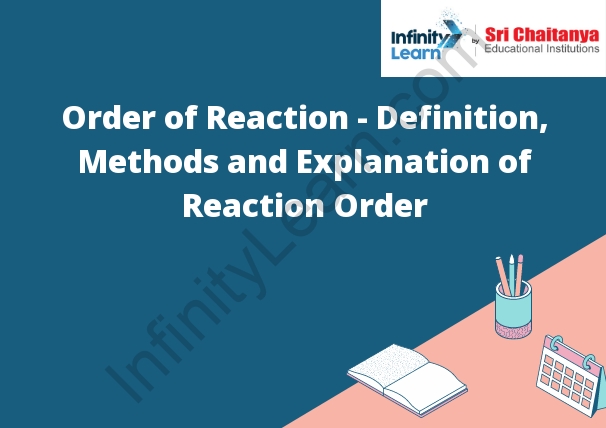Table of Contents
Order of Reaction
Order of Reaction – Definition: The order-of-reaction is the sequence in which the reactants in a chemical reaction are converted into products. The order-of-reaction can be determined experimentally by measuring the time it takes for a reaction to reach completion. The order-of-reaction is usually expressed as the reactant that is converted first into a product.

What is the Order of Reaction?
The order of a reaction the measure of how fast a reaction occurs when the reactants mixed. By how the concentration of the reactants changes with time. The order of a reaction can determined experimentally by measuring the reaction rate at different concentrations of the reactants.It usually written as a sum of the individual orders of the reactants. For example, the reaction
A + B → C
has an order of 1 for A and an order of 1 for B. The overall order of the reaction is 2.
Definition
Order of Reaction: The rate at which a chemical reaction takes place depends on several factors. One such factor is the order of reaction. In this chemical reaction, the order of reaction is the sum of the powers to which the concentrations of the reactants raised. The order of reaction for the following reaction is 2.
How to Find Order of Reaction?
The order of a reaction is the measure of how quickly a reaction occurs. It can determined experimentally by measuring the reaction rate at different concentrations of the reactants. The order of a reaction usually written as an expression with the reactant on the left-hand side and the order on the right-hand side. For example, the order of the reaction A + 2B → C might written as 2A + B → C.
Following Methods Can Used For Determination of Order of Reaction –
- The order of reaction can be determined by plotting the logarithm of the concentration of the reactants against the time.
- It can also determined by plotting the reciprocal of the concentration of the reactants against the time.
- It can determined by plotting the reciprocal of the rate of reaction against the concentration of the reactants.
- The order of reaction can also determined by plotting the rate of reaction against the time.
Difference Between Molecularity and Order of Reaction
Molecularity is the number of molecules that participate in a chemical reaction. The order of reaction is the sequence in which the molecules collide to form the reaction.
Zero Order Reaction
A zero order reaction is a chemical reaction where the reactant concentration does not change with time. The rate of the reaction is constant.
First Order Reaction
The first order reaction equation is
A + B → C
The rate of the reaction, change in the concentration of C divided by the change in time.
Second Order Reaction
A second order reaction is a chemical reaction in which the rate of the reaction is proportional to the product of the concentrations of the reactants.
Pseudo First Order Reaction
The pseudo first order reaction is a type of reaction where the reaction rate determined by the first species to reach a certain concentration.








